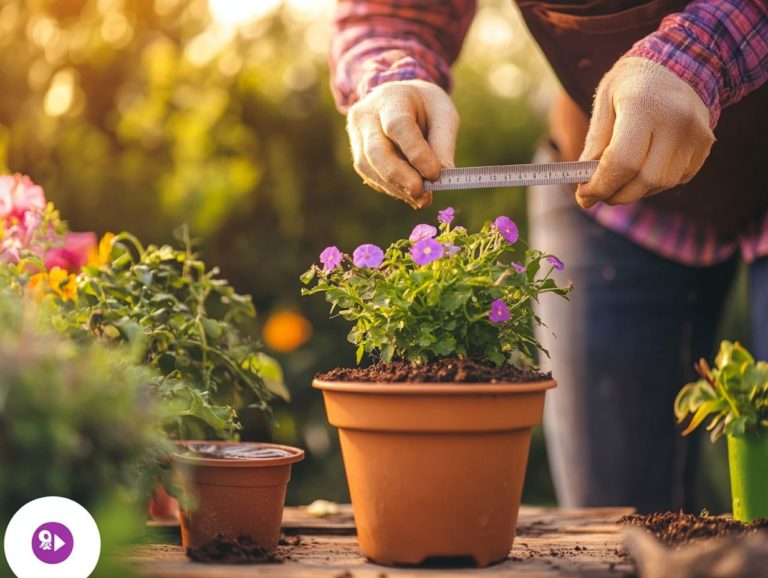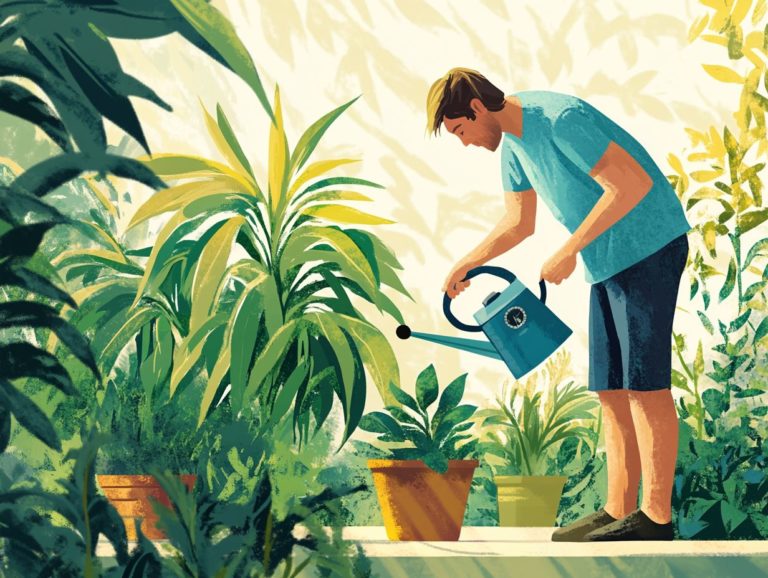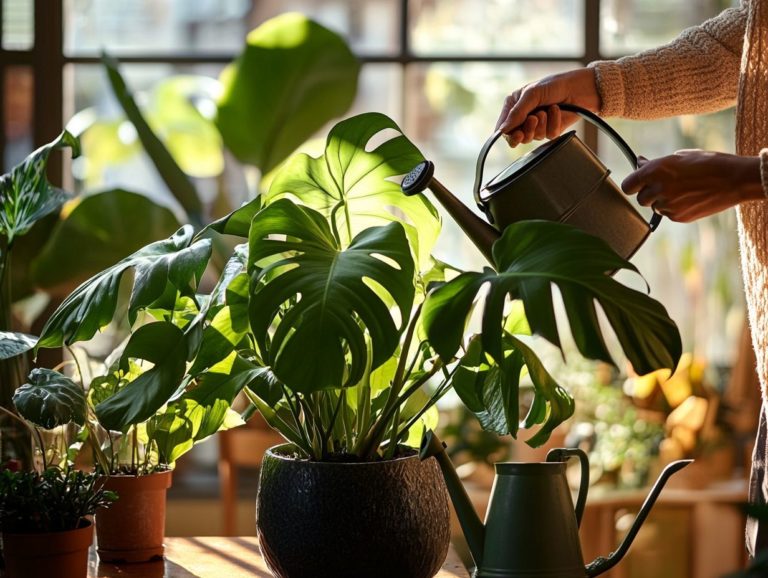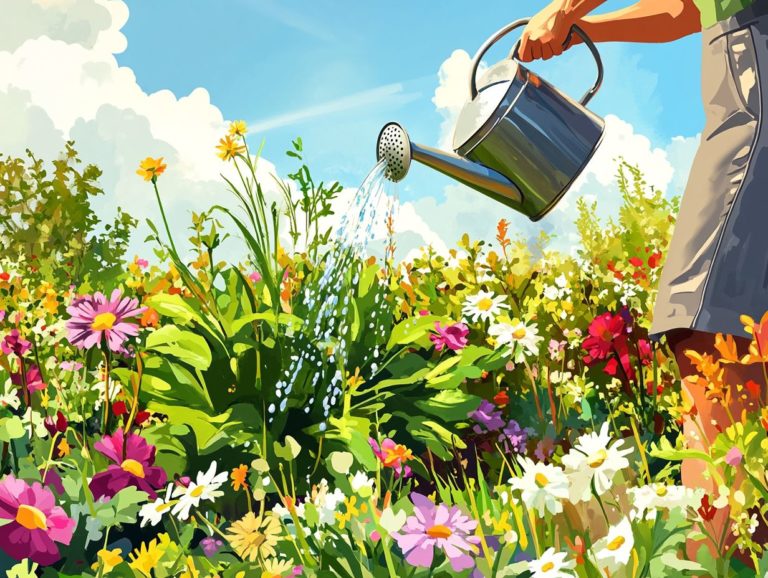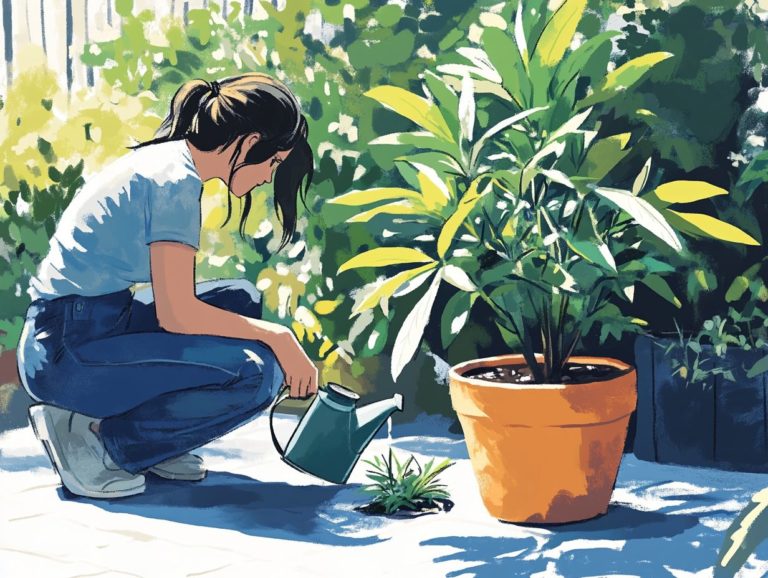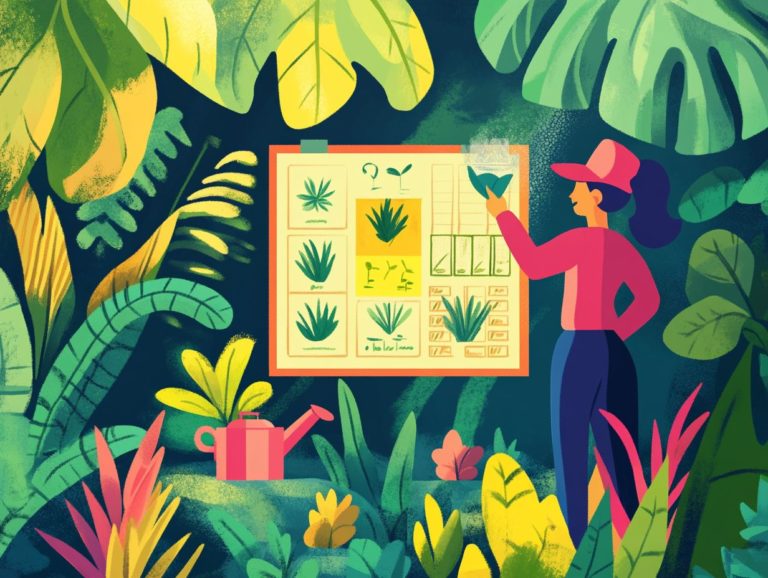Watering vs. Mist: Which is Better?
Nurturing your plants and ensuring they thrive starts with mastering the art of watering. It s absolutely essential!
This article explores the differences between traditional watering and misting. You ll discover the unique benefits and drawbacks of each method. We ll also examine key factors to consider when choosing the best approach for your plants and explore alternative techniques to enhance moisture retention.
Whether you re a seasoned gardener or just starting out, this guide provides you with the knowledge to make informed decisions for your green space.
Contents
- Key Takeaways:
- Understanding Watering and Misting
- Pros and Cons of Watering
- Pros and Cons of Misting
- Which Method is Best for Your Plants?
- Alternatives to Watering and Misting
- Frequently Asked Questions
- What is the difference between watering and misting?
- Which method is better for watering indoor plants and houseplants?
- Is misting effective for all types of plants, including air plants?
- What are the benefits of using a misting system for outdoor plants and greenhouse plants?
- Does misting replace the need for watering, or are watering methods still necessary?
- Can over-misting harm plants, leading to issues like discolored leaves?
Key Takeaways:
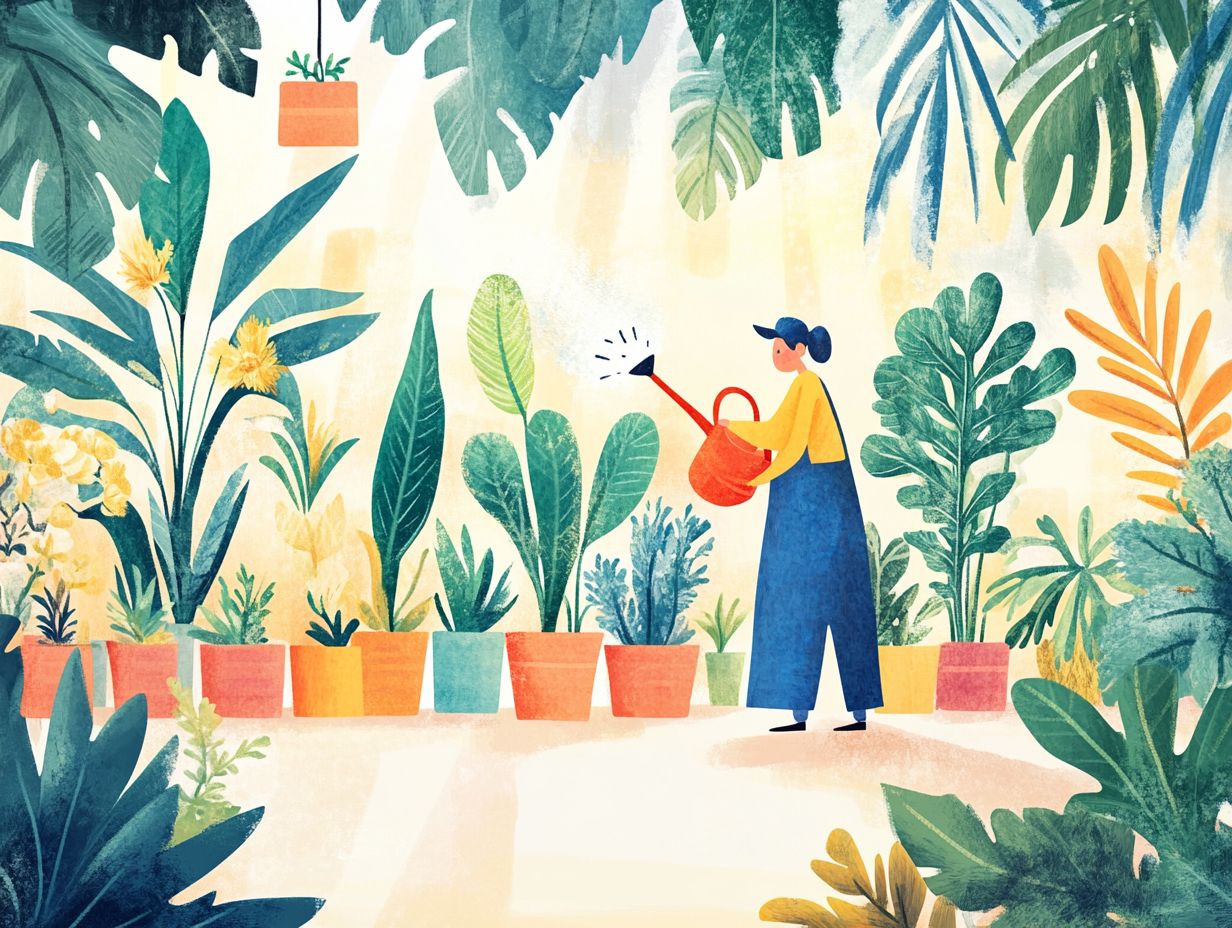
- Watering gives moisture to plants, but be careful of overwatering!
- Misting can boost humidity and prevent overwatering, but it s not for every plant.
- The best method for watering or misting your plants depends on plant type, environment, and personal preference. Try out different techniques to find what works best for your plants!
Understanding Watering and Misting
Knowing the ins and outs of watering and misting can make your plants thrive! Proper watering techniques ensure your plants get the moisture they need. Misting refreshes their leaves and creates the ideal growing environment.
Gardening experts stress that a knowledgeable approach to both practices can lead to healthier plants and enhanced growth. Whether you choose a simple spray bottle or devices that water plants automatically, understanding the differences between these methods will elevate your gardening endeavors.
Definitions and Differences
Misting involves gently spraying water onto your plants to increase humidity levels, while traditional watering focuses on delivering water directly to the soil for optimal absorption.
Each method has a unique purpose tailored to different plant types. Misting is great for tropical or humidity-loving species like ferns and orchids, as it mimics their natural environment and prevents dry leaf edges. Traditional watering is essential for deeper-rooted plants, providing necessary moisture without overwhelming their foliage.
Maintaining the right humidity balance is crucial for plant health. Too little humidity can cause stress and increase susceptibility to pests. By employing proper care techniques, you can boost your plants’ resilience and growth, ensuring a flourishing garden.
Pros and Cons of Watering
Watering is a vital part of plant care, ensuring your houseplants receive the moisture they need to thrive. However, this practice has both advantages and disadvantages that you should consider.
Using the right watering techniques can prevent discolored leaves and promote robust growth. On the flip side, improper methods may lead to mineral buildup and fungal diseases. Gardening experts consistently emphasize the importance of understanding the specific watering needs of different plants, as each has unique requirements to maintain vitality.
Benefits and Drawbacks of Traditional Watering
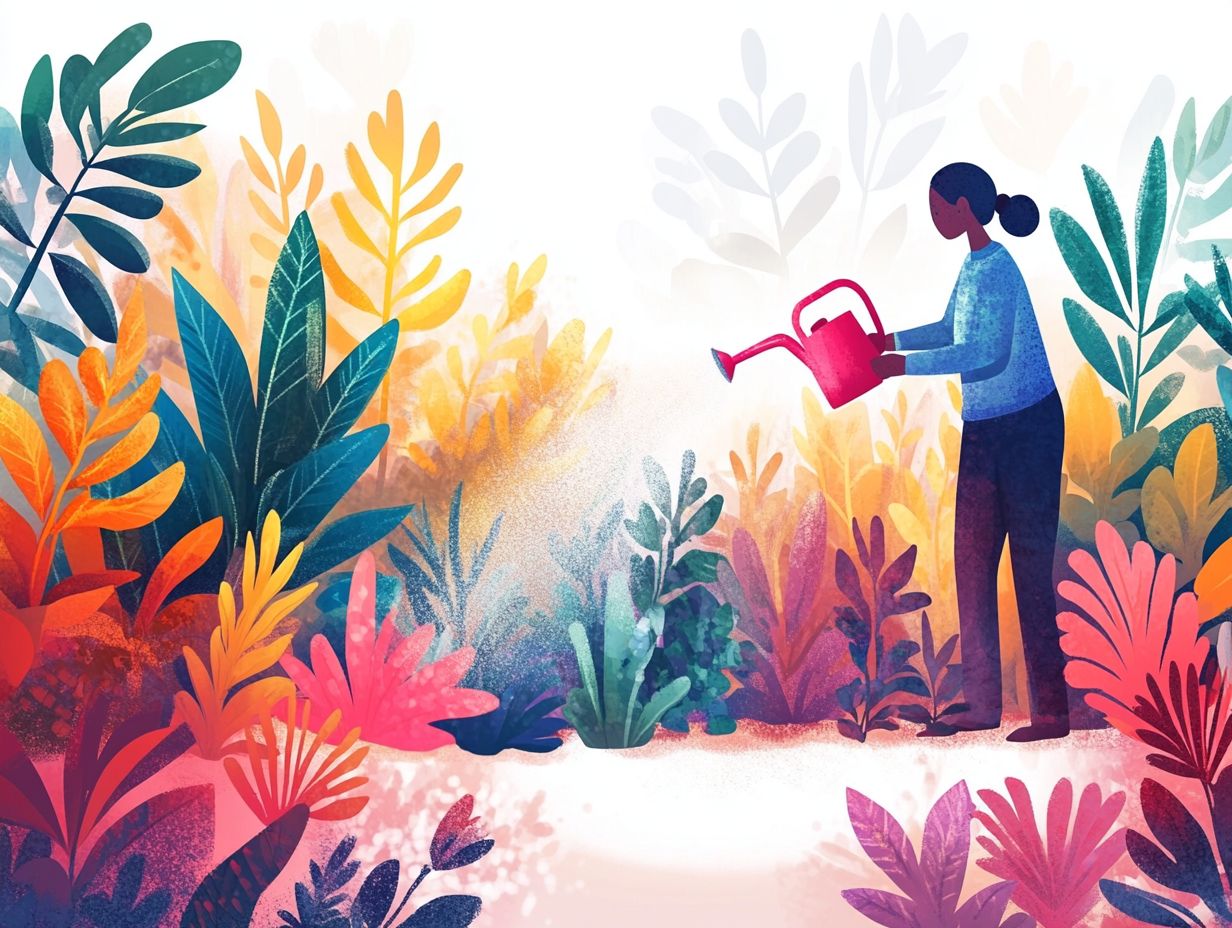
The benefits of traditional watering are substantial. It ensures your plants receive the essential moisture they need, prevents leaf spot, and fosters healthy growth through a consistent watering schedule.
By committing to a structured watering routine, you can nurture your plants effectively. This method helps achieve the ideal balance between hydration and nutrient absorption. It promotes robust root systems and helps maintain vibrant foliage.
However, be mindful of potential pitfalls. Overwatering can lead to root rot, while inadequate moisture levels may stunt growth. Improper techniques can also create a breeding ground for fungal diseases, so monitoring soil moisture is crucial.
Understanding these nuances can significantly elevate your plant care, ensuring a thriving, resilient garden.
Pros and Cons of Misting
Misting presents a unique set of advantages and disadvantages for plant care, especially for indoor and tropical plants that thrive in humid conditions. It elevates humidity levels, rejuvenating air plants and boosting their growth potential.
Overdoing misting may lead to challenges like fungal diseases and excess dampness, which can harm delicate leaves. Understanding these pros and cons is vital for anyone aiming to create an optimal green environment for their plants.
Advantages and Disadvantages of Misting
The advantages of misting are compelling. It increases humidity levels that air plants and tropical varieties thrive on. However, it can also foster fungal diseases if not done carefully.
For many houseplants, especially those from rainforests and warm climates, maintaining optimal moisture is essential for their well-being and growth. Misting is an effective way to mimic the natural humidity these plants cherish, nourishing the foliage and boosting photosynthesis, which helps plants convert sunlight into energy for vigorous growth.
Use clean spray bottles filled with filtered water to avoid introducing contaminants. By taking these precautions, you can enjoy increased humidity while minimizing the risks of rot or fungal issues. This ensures your plants thrive in the best possible environment.
Which Method is Best for Your Plants?
Wondering if watering or misting is best for your plants? It requires thoughtful consideration of key factors, including the specific needs of different plant species and their watering requirements.
Gardening experts recommend evaluating humidity levels, soil moisture, and environmental conditions before making a decision. Understanding these aspects allows you to customize your care strategy, ensuring optimal growth and health for your houseplants.
Factors to Consider

When choosing between watering and misting, consider the humidity levels in your environment and the specific watering needs of your plants. Also, reflect on the gardening techniques that suit your style.
These factors determine how well moisture reaches the roots or leaves of your greenery. For instance, plants like ferns and tropical varieties benefit from regular misting to maintain the right moisture without drowning the soil. In contrast, succulents and cacti prefer a drier atmosphere, necessitating watering methods that ensure quick drainage.
By understanding how climate affects evaporation rates, you can choose the most effective technique, enhancing the health and vibrancy of your plant collection.
Alternatives to Watering and Misting
Exploring alternatives to traditional watering and misting methods can elevate your plant care routine! Get ready to transform your plant care! Consider options such as:
- capillary matting
- drip irrigation
- automated sprinkler systems
Each of these solutions fits different gardening styles and meets the specific needs of your plants, ensuring they thrive beautifully.
Other Watering and Moisture Techniques
Other watering and moisture techniques, like mist systems, offer effective alternatives to traditional watering and misting methods. They ensure your plants receive the care they truly deserve.
These innovative methods use unique mechanisms to optimize moisture retention and distribution. For example, capillary matting draws water up through the material, keeping the soil consistently moist. This method avoids the risk of over-saturation that often comes with regular watering.
On the other hand, mist systems create a natural environment by providing humidity, which is particularly advantageous for tropical plants. While these techniques can promote healthier plant growth, they do have downsides, such as initial setup costs and the need for regular monitoring and adjustments.
Make sure you consider the specific needs of each plant and the surrounding environmental conditions before choosing a method. This thoughtful approach will ensure you achieve optimal results.
Frequently Asked Questions
What is the difference between watering and misting?
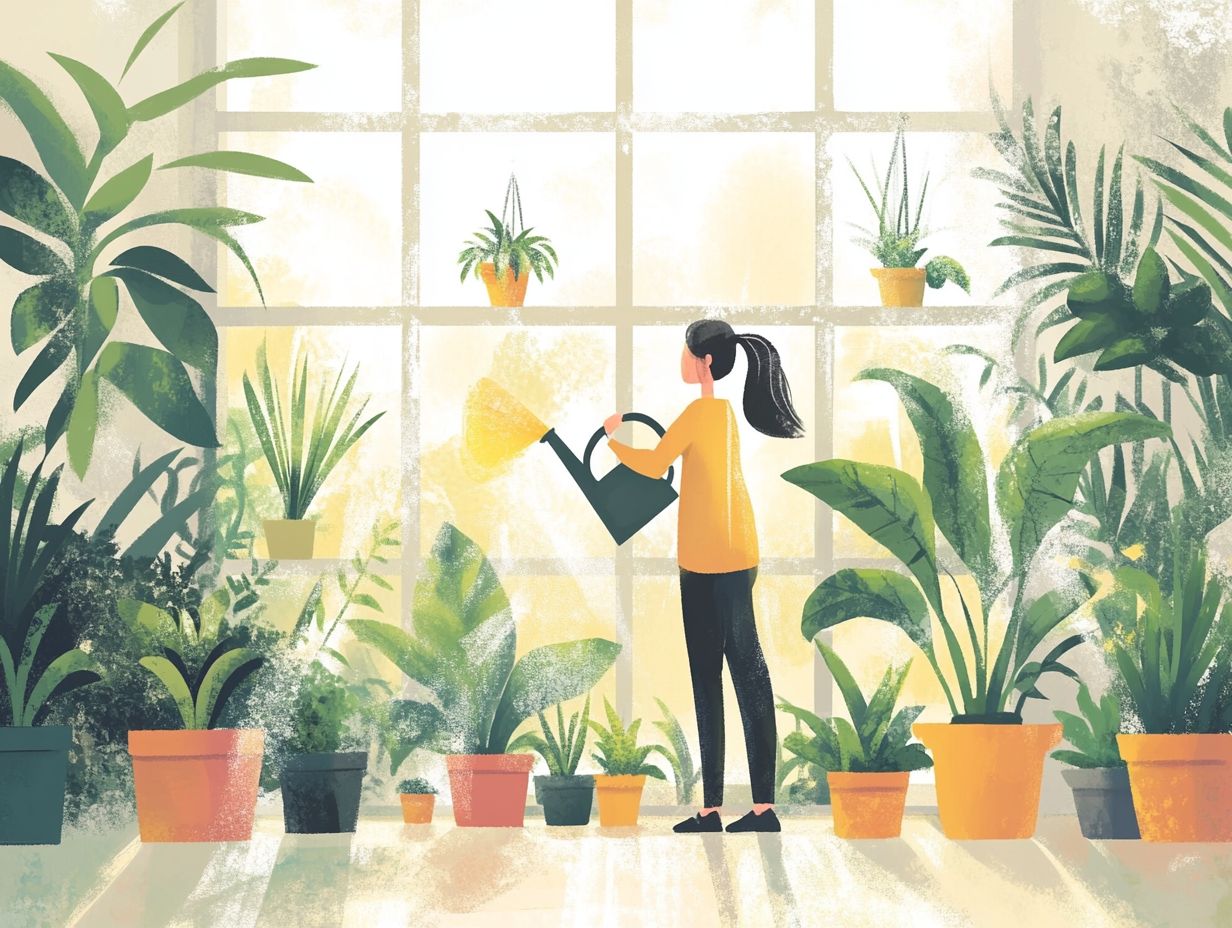
Watering involves using a larger amount of water to directly saturate the soil, while misting lightly sprays water on the leaves and stems of a plant.
Which method is better for watering indoor plants and houseplants?
It depends on the type of plant and its watering needs. Some houseplants, especially tropical plants, prefer to be watered from the bottom, while others do well with misting to mimic their natural environment.
Is misting effective for all types of plants, including air plants?
No, misting is not suitable for all plants. Succulents and cacti, for example, do not do well with misting, as it can cause fungal growth and rot.
What are the benefits of using a misting system for outdoor plants and greenhouse plants?
A misting system can provide a more consistent level of moisture for plants, reduce heat stress, and provide a cooling effect during hot weather.
Does misting replace the need for watering, or are watering methods still necessary?
No, misting cannot replace the need for proper watering. It is important to still water plants at their base to ensure the roots are getting enough water.
Can over-misting harm plants, leading to issues like discolored leaves?
Yes, over-misting can cause waterlogging and increase the risk of fungal diseases. It is important to monitor the moisture levels of the soil and only mist when necessary.
Explore these methods and find the best one for your plants today!

